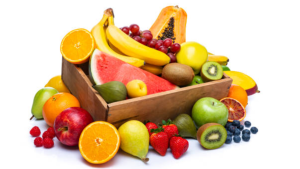Ever experience that deep-seated desire for a hug? It's not just about physical warmth; it's your body's subtle plea for connection, comfort, and care. This feeling is frequently associated with oxytocin, often dubbed the "love hormone" or "cuddle hormone". Oxytocin fosters feelings of calmness, closeness, and emotional security. While commonly released through physical touch like hugs and cuddles, there are numerous other avenues to achieve that same emotional lift.
Here are seven simple, everyday methods to gently stimulate oxytocin release in your brain, no physical contact required:
Have you ever felt truly "seen" during a conversation? That's oxytocin in action. Making gentle eye contact, especially during sincere or significant conversations, cultivates trust. In turn, your brain responds by releasing oxytocin. Even brief moments of eye contact can foster a sense of grounding and connection.

Helping others, even in small ways, benefits your brain as well. Whether it's sharing a treat, holding a door, or sending an encouraging message, these simple acts of kindness ignite a subtle sense of joy and connection within you.
That song that gives you goosebumps or fills your heart with emotion is also working on a chemical level. Music that resonates with you, providing comfort or understanding, can stimulate oxytocin release. This effect is amplified when you sing along, share the music with a friend, or allow it to aid in processing emotions.
Stroking your dog, relaxing with your cat, or observing fish in an aquarium can be incredibly soothing. Animals are non-judgmental companions who don't ask questions. Studies show that spending time with pets elevates oxytocin levels in both humans and animals. A quiet moment with a furry friend can be profoundly beneficial.
Slowing your breath, even for a minute, facilitates relaxation. Try sitting quietly, closing your eyes, and breathing in slowly through your nose, then exhaling through your mouth. This shifts your body into a calmer state, making it easier for oxytocin to be released. It's like giving yourself a gentle, internal hug.
There's something inherently special about sharing food. Whether you're cooking with family, enjoying lunch with a friend, or offering someone a piece of chocolate, sharing food creates a sense of comfort and trust, gently boosting oxytocin levels.
Laughter is a powerful tool. Watching a funny video, reminiscing about a silly moment, or giggling with a friend can stimulate the release of feel-good chemicals in the brain, including oxytocin. It's a gentle reset for your nervous system.
Oxytocin promotes feelings of safety, emotional support, and enhanced connection with others. In a world where disconnection and overstimulation are prevalent, finding simple ways to feel calm and cared for can significantly improve well-being. The next time you crave a hug, remember that alternative ways to feel close, warm, and content exist. A kind word, a deep breath, or a shared laugh might be all you need.
Newer articles
Older articles
 SA20 Teams Given Six Retention Options Ahead of Season 4 Auction
SA20 Teams Given Six Retention Options Ahead of Season 4 Auction
 Gavaskar Calls for Kuldeep Yadav's Inclusion in Second Test Amid Bumrah Fitness Concerns
Gavaskar Calls for Kuldeep Yadav's Inclusion in Second Test Amid Bumrah Fitness Concerns
 Former Selector Blasts India's Fielding Errors After Test Defeat to England
Former Selector Blasts India's Fielding Errors After Test Defeat to England
 Rishabh Pant is 'Reinventing' Cricket, Says Greg Chappell, Following Heroic Test Display
Rishabh Pant is 'Reinventing' Cricket, Says Greg Chappell, Following Heroic Test Display
 5 Daily Practices That Radiate Confidence
5 Daily Practices That Radiate Confidence
 Test Your Focus: Spot the Hidden Word in This Optical Illusion Challenge
Test Your Focus: Spot the Hidden Word in This Optical Illusion Challenge
 Messi, 38, Recreates "Ankara Messi" Magic with Stunning Solo Goal for Inter Miami
Messi, 38, Recreates "Ankara Messi" Magic with Stunning Solo Goal for Inter Miami
 Expert Dismisses Claim That Eating Fruit on Empty Stomach Raises Diabetes Risk
Expert Dismisses Claim That Eating Fruit on Empty Stomach Raises Diabetes Risk
 Nine-Year-Old Indian Chess Prodigy Holds Magnus Carlsen to Draw in Online Tournament
Nine-Year-Old Indian Chess Prodigy Holds Magnus Carlsen to Draw in Online Tournament
 Mirabai Chanu Reveals Relentless Demands of Weightlifting: Training, Weight Control Consume Mind Even During Family Time
Mirabai Chanu Reveals Relentless Demands of Weightlifting: Training, Weight Control Consume Mind Even During Family Time